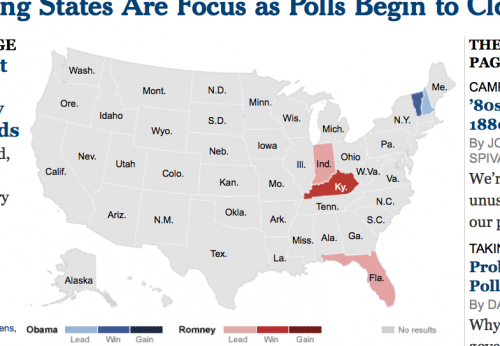

In October, it was responsible for 5 percent of the Times’ total site visitors. Since launching in April, the Upshot has established itself as an irresistible read and a significant source of traffic, generating four of the top-20 most-viewed stories on in 2014. But what to call it? He commissioned a newsroom contest to name the thing, and graphics director Steve Duenes won the prize-a bottle of rosé Champagne-for coming up with “The Upshot.” Instead, he proposed a data-crunching site with a mandate to cover just about anything. The last two presidential elections produced record levels of interest, but there was no guarantee future elections would engage voters as obsessively. Besides, he didn’t want to build a site that would be tethered to the political moment. “Nate is not an easy guy to replace,” he says. Leonhardt, who was considered something of a wunderkind in the newsroom (having earned a Pulitzer Prize for his economics column and been appointed D.C.-bureau chief when he was just 38), told Times executives he did not want to duplicate Silver’s formula. By late summer, David Leonhardt had been tasked with figuring out a new data-journalism site.

After all, in the days leading up to the 2012 election, FiveThirtyEight accounted for a stunning 20 percent of the Times’ online readership among consumers of the Times’ political coverage, it accounted for about 70 percent.īut the company didn’t lick its wounds for long. When Nate Silver, the statistics-savvy presidential-campaign prognosticator, uprooted his data-driven FiveThirtyEight blog from the New York Times and moved it to ESPN and ABC News in July 2013, a chorus of media observers rushed to deliver dire predictions about what his departure meant for the Times’ online prospects.

US military has been observing ‘metallic orbs’ making extraordinary. Newsom doubles down on possible legal charges over migrant flights from FloridaĬostco shoppers shifting away from specific item CFO says it’s indicator of. What to do now ahead of student loan pause ending Human Rights Campaign declares national state of emergency for LGBTQ peopleīarr pushes back on Trump: This is not a ‘witch hunt’įlorida confirms it sent migrants to California amid Newsom-DeSantis feud Tucker Carlson releases first episode on Twitter: 'We're grateful to be here' House Oversight leaders clash after viewing FBI document on Biden allegations Judge grants request for George Santos’s bond sponsors to be unsealed Trump lashes out after lawyers meet with DOJĬonservatives stun GOP leaders with dramatic mutiny on House floor This material may not be published, broadcast, rewritten, or redistributed.Ĭonservatives revolt against GOP leaders on House floor It estimates how the remaining votes will break, based on the patterns in the results counted so far,” the Times wrote. “The needle compares the election results to our pre-election expectations for each county or precinct. “It projects the final result based on an analysis of the vote that’s been counted and an estimate of how many votes are still left to be counted,” the newspaper wrote in a recent explanation of how the forecasting tool works. The election needle has become a staple of the Times’s political coverage since it was first implemented in 2016, when it drew sharp criticism for giving Hillary Clinton an 80 percent chance of victory over Donald Trump.

All other estimates would be unaffected.”ĬNN holding town hall with Chris Christie on June 12 “Louisiana appears to have been coded as Democratic at some point, adding an extra seat for them. “We’re going to have to pull the needle off the page to fix this,” said Nate Cohn, the newspaper’s chief political analyst, in response to one. Several users on Twitter pointed out errors in the needle’s calculations as results came in as polls closed on Tuesday night.


 0 kommentar(er)
0 kommentar(er)
